Women of Spirit
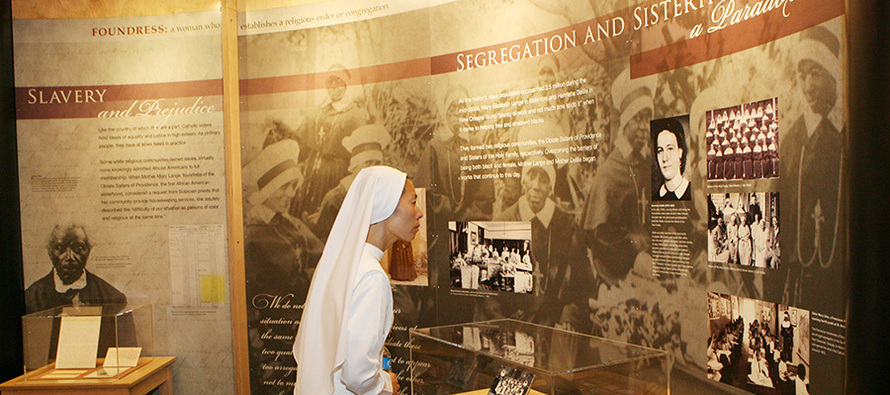
Image: Featuring artifacts, photographs, videos, and firsthand accounts, “Women & Spirit: Catholic Sisters in America” chronicled how Catholic sisters helped to create the fabric of America.
Though many Catholics may be familiar with sisters from their parish and school experiences, the history of these women has remained somewhat hidden. Traveling the country between 2009 and 2012, the “Women & Spirit: Catholic Sisters in America” exhibit has shed some light on the remarkable history of these women and their communities.
Sisters then and now
After first arriving in America nearly 300 years ago, Catholic sisters established schools, colleges, hospitals, orphanages, and many other institutions that addressed critical social needs. As nurses, teachers, and social workers, they entered professional ranks decades earlier than most other women. Their work provided blueprints for the nation’s educational and health-care systems that continue to serve millions of Americans from all walks of life.
It began in 1727 when 12 French Catholic sisters braved pirates to cross the Atlantic and establish the first community of sisters in what is now the United States, in New Orleans. Today more than 63,000 Catholic sisters are carrying on a centuries-old tradition of service and prayer.
Help for immigrants
Between 1820 and 1914 some 30 million European immigrants arrived in the United States. With them came sisters from France, Ireland, Germany, Poland, Italy, and other countries to work in their communities, educate their children, and care for them when they were ill. In 1830 fewer than 500 sisters lived in the U.S. By 1900 that number had increased to nearly 50,000.
Today, immigrant sisters continue to be a presence just as their European predecessors were. Increasing numbers of sisters from Asia, Latin America, and Africa are coming to the U.S. to work with people from their native countries.
Education for new Americans
More Americans came to know Catholic sisters in classrooms than in any other setting. From the arrival of the first sisters, millions of children have attended schools taught by—and in many cases founded by—Catholic sisters. Many of these schools were made up of immigrants, and classes were often taught in a second language as well as English. The first American-born saint, Elizabeth Ann Seton, founder of the Sisters of Charity, was a mother and widow who established the nation’s first free Catholic school. The Catholic school system today is the largest private school system in the world.
Advancing women’s education became a particular focus for many American religious communities. Catholic sisters founded more than 110 colleges and universities in the U.S. Throughout the early 1900s, a higher percentage of Catholic sisters earned college degrees than most women of their era. Young women who attended academies and colleges sponsored by Catholic sisters earned their diplomas and also saw in the sisters powerful role models of leadership and service.
Health care
In addition to education, health care has been a main area of activity for women’s religious communities in the U.S., and like their role in education, it goes back a long way. During the American Civil War more than 600 sisters from 21 different religious communities nursed both Union and Confederate soldiers and provided skilled nursing from the time of the Civil War to the flu epidemic of 1918. In the 19th century the public that once perceived sisters as outsiders came to appreciate their care and skill.
Reflecting the many hospitals Catholic sisters established, in 2005 approximately one in six hospital patients in the U.S. were treated in a facility founded by Catholic sisters.
Service to those in need
Throughout the mid-19th century, waves of immigrants arriving in the U.S. came to overcrowded city tenements where poor sanitation and insufficient health care resulted in widespread disease and devastating epidemics—conditions that offered new challenges for Catholic sisters. Children were becoming orphans in staggering numbers; 30,000 were estimated to be parentless or abandoned in the streets of New York City in the 1860s.
One of the sisters’ responses to this problem had its start on an autumn night in 1869 when three sisters found a baby girl, “Sarah H.,” on their doorstep. Since then several hundred thousand children have been cared for by what grew into the New York Foundling Hospital. Now in the 21st century the hospital continues its mission to shelter children and help families in crisis.
Vatican II and beyond
In 1962 Catholic bishops from around the world gathered in Rome. Although only a few sisters attended the Second Vatican Council, also known as Vatican II, it transformed the lives of women religious at home and abroad. The council challenged Catholic sisters, as well as men’s Catholic religious communities, to reexamine their charisms—why their communities were founded. It also urged them to respond to the “signs of the times” and go and serve where they were most needed, and for many sisters peace and social justice became more central to their mission. Some paid the ultimate price: Since 1980 at least nine American sisters have been martyred while working for social justice and human rights overseas.
As communities evolved inwardly, they also reflected outward change. They were specifically commissioned in Vatican II’s Decree on the Adaptation and Renewal of Religious Life to ensure that their habit “meet the requirements of health and be suited to the circumstances of time and place and to the needs of the ministry involved. The habits of both men and women religious which do not conform to these norms must be changed.” For some communities that meant wearing contemporary clothes, for others it meant a modified habit, and for still others it meant retaining their community’s traditional garb.
Communities continue to read the signs of the times and go where the need is great. Since 1995, numerous congregations have participated as nongovernmental organizations (NGOs) at the United Nations, focusing on global issues such as climate change, human trafficking, and poverty.
In 2009, the U.S. House of Representatives honored the historical contributions of Catholic sisters in the United States.
Thanks to the Leadership Conference of Women Religious, Immersive Marketing, and Seruto & Co. for their help compiling this article. Learn more about the the sisters’ exhibit and the contributions of women religious at WomenAndSpirit.org.
Though many Catholics may be familiar with sisters from their parish and school experiences, the history of these women has remained somewhat hidden. Traveling the country between 2009 and 2012, the “Women & Spirit: Catholic Sisters in America” exhibit has shed some light on the remarkable history of these women and their communities.
Sisters then and now
After first arriving in America nearly 300 years ago, Catholic sisters established schools, colleges, hospitals, orphanages, and many other institutions that addressed critical social needs. As nurses, teachers, and social workers, they entered professional ranks decades earlier than most other women. Their work provided blueprints for the nation’s educational and health-care systems that continue to serve millions of Americans from all walks of life.
| A three-key box known as a “common safe” was used by early sisters. As women they could not have bank accounts. |
Help for immigrants
Between 1820 and 1914 some 30 million European immigrants arrived in the United States. With them came sisters from France, Ireland, Germany, Poland, Italy, and other countries to work in their communities, educate their children, and care for them when they were ill. In 1830 fewer than 500 sisters lived in the U.S. By 1900 that number had increased to nearly 50,000.
Today, immigrant sisters continue to be a presence just as their European predecessors were. Increasing numbers of sisters from Asia, Latin America, and Africa are coming to the U.S. to work with people from their native countries.
| Sisters of Charity faculty of the St. John school, Scottdale, Pennsylvania, c. 1920 |
More Americans came to know Catholic sisters in classrooms than in any other setting. From the arrival of the first sisters, millions of children have attended schools taught by—and in many cases founded by—Catholic sisters. Many of these schools were made up of immigrants, and classes were often taught in a second language as well as English. The first American-born saint, Elizabeth Ann Seton, founder of the Sisters of Charity, was a mother and widow who established the nation’s first free Catholic school. The Catholic school system today is the largest private school system in the world.
Advancing women’s education became a particular focus for many American religious communities. Catholic sisters founded more than 110 colleges and universities in the U.S. Throughout the early 1900s, a higher percentage of Catholic sisters earned college degrees than most women of their era. Young women who attended academies and colleges sponsored by Catholic sisters earned their diplomas and also saw in the sisters powerful role models of leadership and service.
| Sister Hilary Ross was an outstanding scientist who authored more than 40 scientific papers on the biochemistry of leprosy. |
In addition to education, health care has been a main area of activity for women’s religious communities in the U.S., and like their role in education, it goes back a long way. During the American Civil War more than 600 sisters from 21 different religious communities nursed both Union and Confederate soldiers and provided skilled nursing from the time of the Civil War to the flu epidemic of 1918. In the 19th century the public that once perceived sisters as outsiders came to appreciate their care and skill.
Reflecting the many hospitals Catholic sisters established, in 2005 approximately one in six hospital patients in the U.S. were treated in a facility founded by Catholic sisters.
Service to those in need
Throughout the mid-19th century, waves of immigrants arriving in the U.S. came to overcrowded city tenements where poor sanitation and insufficient health care resulted in widespread disease and devastating epidemics—conditions that offered new challenges for Catholic sisters. Children were becoming orphans in staggering numbers; 30,000 were estimated to be parentless or abandoned in the streets of New York City in the 1860s.
| Sister and children at the New York Foundling Hospital in the late 1950s. |
Vatican II and beyond
In 1962 Catholic bishops from around the world gathered in Rome. Although only a few sisters attended the Second Vatican Council, also known as Vatican II, it transformed the lives of women religious at home and abroad. The council challenged Catholic sisters, as well as men’s Catholic religious communities, to reexamine their charisms—why their communities were founded. It also urged them to respond to the “signs of the times” and go and serve where they were most needed, and for many sisters peace and social justice became more central to their mission. Some paid the ultimate price: Since 1980 at least nine American sisters have been martyred while working for social justice and human rights overseas.
| Sister Barbara Battista of the Sisters of Providence of Saint Mary-of-the-Woods. Many sisters have lent their support to justice issues such as global peace and nonviolence. |
Communities continue to read the signs of the times and go where the need is great. Since 1995, numerous congregations have participated as nongovernmental organizations (NGOs) at the United Nations, focusing on global issues such as climate change, human trafficking, and poverty.
In 2009, the U.S. House of Representatives honored the historical contributions of Catholic sisters in the United States.
| Immaculate Heart of Mary Sister Corita Kent (photo at left), influential pop artist of the 1960s and 70s, in front of her work in the art room of Immaculate Heart College in Los Angeles. Catholic sisters (photo at right) participating in the 1965 Selma, Alabama civil rights march. |
Tags
Related
- Literature makes good people better
- Icons: An age-old entrée into the divine
- Religious communities have deep and diverse roots
- Scientific wonder is God’s handiwork
- Respite and renewal brought to you by religious communities
- Lives that lead to God: Biographies and memoirs
- Religious orders aid and advocate for migrants
- Rural religious take to the highways and byways
- Divine design: The holiness of place
- More prayer spaces of religious communities Read More
Most Viewed
- Find your spirituality type quiz
- Questions and answers about religious vocations
- Celibacy quiz: Could I be a nun? Could I be a brother? Could I be a priest?
- Resources for older discerners or those with physical and developmental differences
- About Vocation Network and VISION Guide


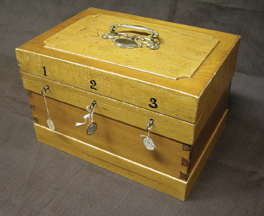
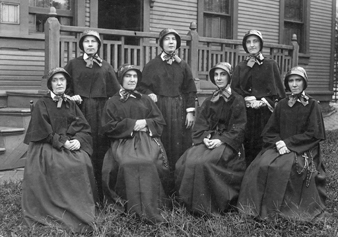
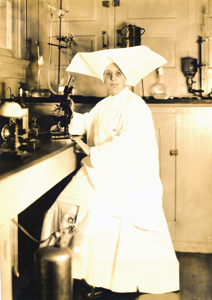
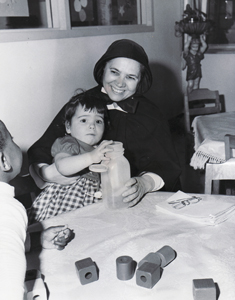
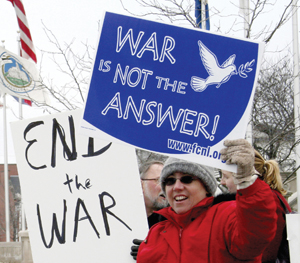
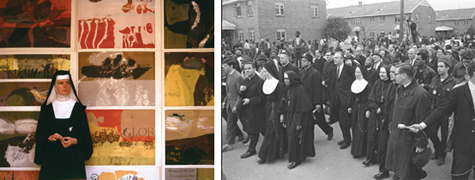
 Joel Schorn is managing editor of VISION.
Joel Schorn is managing editor of VISION.